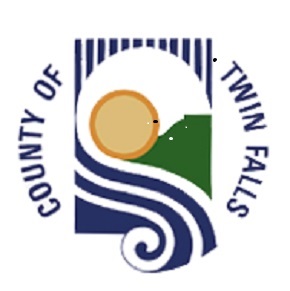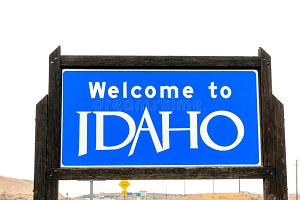Jerome County Medicare Advantage Plans
 Several 2025 Jerome County Medicare Advantage plans caught our attention.
Several 2025 Jerome County Medicare Advantage plans caught our attention.
The first is an HMO-POS plan with key 5-star hospitals in Oregon, Washington, Utah and Idaho in their network! This means you pay in-network rates when you use these resources. This same plan opens up access to other hospitals/physicians in the US that ‘accept Medicare’ too. This can be useful for ‘snowbirds’.
The second plan is new for 2025. This HMO plan has all the of the boxes checked (attractive network, formulary, out of pocket costs, competitive ‘extras’, and MOOP). If you presently have an HMO plan (or are considering one for 2025) and live in Jerome County we encourage you to add this to your short list.
Also, there are additional plans for people that have been medically diagnosed with Diabetes mellitus; and/or Chronic heart failure; and/or Cardiovascular disorder (cardiac arrhythmias, coronary artery disease, peripheral vascular disease, chronic venous thromboembolic disorder).
If you have a Medicaid status of QMB and SLMB+ with the above-mentioned health issues, the plans mentioned above are also available.
There are other Jerome County Medicare HMO and PPO plans on our recommend list. Which medications, hospital preferences, and health issues a person has/does not have are determining factors on which are appropriate.
Interested in learning more? Print the ‘Scope of Appointment’ document (available here), sign/date it, then take a picture of the signed document and text it to us (1-208-867-0296). Upon receipt we will call you and share the details.
What else you need to know!
For 2025, Jerome County has 25 Medicare Advantage plans for residents to consider.
Here is the high level break down:
6 plans do NOT include prescription drug coverage; Veterans may find these plans attractive.
4 of these are PPO;
2 are HMO plans.
Veterans should also consider the new HMO plan mentioned above. Why? It’s Part B give back is higher than any of the Medicare Advantage plans which do not include prescription drug coverage.
13 plans do include prescription drug coverage and services covered by Medicare Part A and B.
9 are HMO plans;
4 are PPO plans.
The remaining plans are reserved for individuals who qualify for Medicaid special needs plans (C-SNP or D-SNP).
There is another type of Medicare plan you should be aware of.
These are Medigap plans.
When you choose this Medigap plan, all doctors/hospitals that accept Medicare insurance in the USA are available to you. This means you do not have the network restrictions/rules found in Jerome County Medicare Advantage plans.
Also, you do not have an insurance company standing between your physician to get permission to move forward with your treatment plan. Physicians/hospitals may prefer these plans because they know they will be paid in a timely manner.
You will have fewer ‘prior authorizations’ to deal with.
Learn more about Idaho Medigap plans here.
What are the some of the differences between Medicare Advantage plans?
One item is the plan’s Maximum out of pocket limit (MOOP).
This is a key figure you should be aware of.
Put plans on your short list that have a lower MOOP. This decision may save you money if you use Medicare covered health care services during the plan year.
Be mindful Medicare pays its share of the cost for services you use. You pay the rest. Your share of these costs can vary noticeably between plans.
Think of the MOOP as your limit (or cap) for your share of health care costs for Part A and B services you use during the calendar year. The higher your plan’s MOOP, the more you could end up paying for the services you use.
Medicare sets the maximum figure(s) a plan can have, and they can change it annually.
The insurance company offering your plan sets the plans MOOP where they want it. It must be at or below Medicare’s limit. This figure can change annually.
What are the actual MOOP figures?
Medicare’s maximum MOOP for this year’s HMO plan is $9,300.
The MOOP maximum for PPO plans cannot exceed $14,300.
Insurance companies offering Medicare Advantage plans set their plan’s MOOP based on each of their plan’s business goals.
Once you hit your plan’s MOOP, your insurance company pays the rest of your share of the cost when you use Part A/B services.
The range of MOOP for your County’s HMO Medicare Advantage plans is $4,200 to $9,350.
The range for PPO plans is $5,900 to $14,000.
The example below will help you understand how your plan’s MOOP works.
Let’s say your plan’s MOOP is $7,000 for the year.
In January you are admitted to the hospital for surgery. Your bill for the 5-day hospital stay is $1,750. Your post-op visits to your physician and physical therapist(s) are $475.
After you pay for these services, you subtract them from your plan’s MOOP; the result is how your new MOOP. When, after you use additional services, and your MOOP hits zero, your plan pays the rest of your share of the cost for Medicare A & B services.
If you have a plan with a ‘lower MOOP’ you have the opportunity to keep more money in your pocket.
The insurance company offering your Medicare Advantage plan sets the cost sharing for each Part A and B covered service too.
This simply means that you pay your share of the costs for services provided by your physician, use specific hospital services like MRI or CAT imaging, cancer treatments, services provided in the surgical suite, etc.. The insurance company behind each plan sets their own cost sharing for that plan. You find these figures in each plan’s ‘Evidence of Coverage’ (EOC).
The EOC also identifies which services must be approved by the insurance company before they can be performed. Be aware approval requests can be denied by the insurance company.
Prior Authorizations.
Services covered by any Medicare Advantage plan may have a ‘prior authorization’ tag on a service. These are found in the plan’s EOC.
The insurance company can approve or deny the prior authorization request. Learn more about what is going when these requests are reviewed and approved or denied by reading this article, this article, and this article. CMS is in the process of implementing changes to help get this back on track.
When you stay with Original Medicare (Part A and B….not have a Medicare Advantage plan) these are the Medicare covered services which have prior authorizations.
Doctors/hospitals/other providers.
Availability of physicians, hospitals, physical therapists, skilled nursing facilities, durable medical equipment providers and all other provider types vary by plan. Read this article to learn more.
The insurance companies offering Medicare Advantage plans put together their networks of these people/facilities for their plan members. Medicare requires insurance meet a minimum adequacy requirement when they put their networks together. This means there is a good probability not all of the physicians/providers that ‘accept Medicare’ insurance are not in your plan’s network.
If, during your plan research, you wish to find out how many of a certain type of specialists are in the plan’s network vs how many that ‘accept Medicare’ are in the same area, you have tools available to figure this out. It may be useful knowing which plans have the higher percentage of cardiologists, oncologists, etc. are in their network. We can show you how to get the answer to this question.
The above can change during the calendar year. This announcement is an example of why networks can change during the year. Another example is found here and here.
Be aware hospitals may/may not be using current technologies/techniques to treat patients. Why? Because of the cost for new technologies are competing for other financial needs of the hospital.
Proton Therapy is an example of newer technology for treating cancer. It is being used as an alternative to radiation treatments.
Read this article if you are unfamiliar with this.
At this writing, 45 hospitals (out of over 4500) offer this solution. Facilities near Idaho include:
Huntsman Cancer Institute (Salt Lake City) (began offering this service in 2021)
The Mayo Clinic Cancer Center (Phoenix…rolled out this service on 2016)
Loma Linda University Cancer Center (began offering this service in 1990)
California Protons Cancer Therapy Center (San Diego) (began offering this service in 2017).
If you are interested in this service, you might check where each of the above facilities are ranked in the top 250 hospitals.
Do you want access to the top 250 hospitals in the country?
The top 250 hospitals in the US may have the latest technologies to treat different health issue(s)…and the physicians that know how to use them. These resources are available to you if they accept Medicare insurance, and you have a Medigap plan.
Does Medicare rate hospitals for us?
Yes.
Hospitals are assigned a ‘star rating’ by Medicare. We recommend Idaho residents focus on 4 and 5-star rated hospitals AND skilled nursing facilities.
There are physician rating services too. One is available here. We focus on physicians with a 4 or 5 star rating and have at least 10-ratings. You can use this same tool to find physicians that ‘accept Medicare insurance’.
We also recommend you use a ‘board certified physician‘.
Medications covered by each plan.
According to this source, there is a 20+/- % variance between the number of prescription medications covered by the plans available to you. Note none of these plans include 100% of the medications covered by Medicare.
This same resource documents the number of medications each plan has in each of the 5 (or 6) drug tiers AND the fill/refill cost by these same drug tiers. These figures can vary noticeably between plans.
Given the wide variance between plans on the above, it is easy to understand why there can be a 300% +/- variance in your projected annual out of pocket cost between your plan choices for the medications you take.
This is a key reason you should not enroll in any Medicare Advantage plan until you understand your cost for your prescription medications. If you are working with a broker/agent that just tells you your medications are covered, we suggest you work with someone else that will share the whole picture.
Are medications that treat serious health issues (cancer, etc.) covered by my plan?
The Centers for Medicare and Medicaid Services (CMS) has requirements insurance company(s) offering Medicare plan(s) must meet when they put together their list of covered medications.
Below is a cut/paste from (Section 30.2.5) the current Medicare Prescription Drug Benefit Manual.
“Part D sponsor formularies must include all or substantially all drugs in the immunosuppressant(for prophylaxis of organ transplant rejection), antidepressant, antipsychotic, anticonvulsant, antiretroviral, and antineoplastic classes. CMS instituted this policy because it was necessary to ensure that Medicare beneficiaries reliant upon these drugs would not be substantially discouraged from enrolling in certain Part D plans, as well as to mitigate the risks and complications associated with an interruption of therapy for these vulnerable populations.“
We feel this is an important statement everyone enrolled/wishing to enroll in a Medicare prescription drug plan should be aware of.
There are 3 different audiences for Jerome County Medicare Advantage plans.
Jerome County Medicare Advantage plans for Veterans.

We like the choices Veterans living in Jerome County have to get VA health care. Idaho Falls and Twin Falls have clinics available. Both Salt Lake City and Boise have hospitals too.
Veterans enrolled in Medicare Part A and B can enroll in a Medicare Advantage or a Medigap plan.
Why would a Veteran consider a Medicare Advantage plan? Because:
- You will have flexibility to get your health care services from the VA and the network of providers in your Medicare Advantage plan. Available services include urgent, emergency, and regular health care. You can still get services from the VA.
- Take advantage of the Part B buyback offered by some of these plans. This means the insurance company MAY offer to pay part of the Veterans Part B monthly premium. At this writing, this ‘give back’ varies from $0 to $100 a month for plans available in Idaho. These figures are determined by the insurance company offering the plan and can change annually.
- Get the $0/low cost ‘extra’ features not covered by Medicare. Some plans have attractive features that may benefit the Veteran.
- Many of these plans have a $0 monthly premium.
Is an HMO or a PPO plan right for you?
A veteran may prefer a PPO plan if they want to open their choice of hospitals and doctors to include those beyond Idaho’s borders.
Be aware when you get plan services are from ‘out of network’ providers, the plan members share of the cost for services can be noticeably higher when compared to using ‘in network doctors/hospitals/etc. Getting ‘out of network’ services may greatly increase the Veterans probability of hitting their plans cap on your share of costs for the year. Check out this figure if you are interested in a PPO plan. Call us if you want help thinking this through.
An HMO plan may fit a veteran that wants coverage outside the VA for regular health care OR just want access urgent and emergent care when it is needed.
Some Veterans choose a $0 premium plan so they can get the low/no-cost ‘extra’ benefits which can come with these plans. We noticed some plan(s) with a high Part B giveback also come with high-cost sharing when plan health care service is used.
If a Veteran plans to get health care from an HMO plan, we need to pay attention to the plan’s network. Participating hospitals and doctors can vary by plan and this can change annually.
Why the interest by insurance companies in the Veterans niche?
A couple of obvious reasons could include they want to say thank you to the Veteran for their service.
Another can be, these plans can be more profitable to the company if the Veteran continues to get their health care from the VA.
This market niche has become quite competitive between the insurance companies.
Some of the companies want to increase their market share by offering more attractive features than their competitors.
When this occurs, we need to pay attention to plan differences.
Competitive features can include the doctors/hospitals in the plan’s network, the cost for health care services provided to the plan member, and the details of any ‘extra’ services not covered by Medicare.
Many MA plans in Idaho also include the Part B buyback. This means the insurance company MAY offer to pay part of the Veterans Part B monthly premium. In other Idaho Counties, this figure varies from $0 and up.
Some Veterans that get their health care from the VA simply enroll in one of these plans to get help paying for their Part B monthly premium and to take advantage of the $0/low cost for the other features included in the plan. Others want access to urgent and emergency care outside of the VA. Others simply want a broader choice of doctors and hospitals.
Another key point is these companies may improve their offerings annually. They do this to attract Veterans already enrolled in another insurance company’s plan as well as Veterans new Medicare.
We suggest Veterans work with an Idaho broker that is also a veteran and is licensed with all these plans.
We can help you with this when you are ready. Learn more about us here.
Jerome County residents enrolled in Medicare and Medicaid.

There are several satellite offices spread around the State.
Blue Cross of Idaho is exiting the IMPlus and MMCP Idaho market on 5/31/2025.
Idaho Department of Health and Welfare (IDHW) clarified this announcement on February 5, 2025 and is available here. Answers to ‘frequently asked questions’ is available here.
If you are presently enrolled in either of these plans, you will be receiving correspondence from both Idaho Department of Health and Welfare and Blue Cross of Idaho.
UnitedHealthcare will be entering the Idaho IMPlus market on 6/1/2025 and the MMCP market on 1/1/2026.
Molina continues to serve Idaho residents with these important products.
If you prefer to work with an Idaho based broker to get your coverage realigned, we are here to help. We have been helping Idaho residents with their Medicare choices since 2012 and MMCP plans since 2022.
Additional pertinent information about Idaho Medicaid and your plan choices.
There are several different types of plans available to Idaho residents enrolled in Medicaid. If the Idaho Department of Health and Welfare categorized you in the ‘Basic’ category, you have a different set of Medicare Advantage plans to choose from (compared to individuals categorized as ‘Enhanced’).
If you are eligible for an I-SNP OR a C-SNP plan, you have different plans to consider.
Click here to learn more about your options.
We are licensed with C-SNP, D-SNP, QMB and Medicare Medicaid Coordinated plans (MMCP).
Explaining plan differences and helping you with enrollment are other services we help you with.
Medicare Advantage plans for the rest of the Medicare beneficiaries living in Jerome County
Check out the hospitals in each plan’s network and where they are located.

Jerome County has several hospitals/clinics in reasonable driving distance from Jerome (50-miles).
Check out the facilities within 50 miles of zip code 83338 by clicking here.
When you get to this web page, enter your zip code (83338) and adjust the radius to 50-miles.
Notice there are 5 hospitals within this radius.
3 have a 4-star rating the other 2 do not have a CMS rating. The 4 star rating is including Minidoka Memorial, North Canyon Medical Center and the St Lukes resource in Twin Falls.
Learn more about CMS hospital rating here.
Hospital(s) without a rating may have not reported their results or did not meet the minimum number of procedures to be measured and rated for the current period.
When selecting a health plan, be sure the hospitals and doctors you want to take care of you no matter the health issue is available to you.
The CMS hospital rating system is a guideline to consider using.
You can also use another tool that identifies the top 100 hospitals in the US. This information rates hospitals by type of surgery within hospital too. Learn more here. You can consider these resources if you have a plan which opens up these facilities to you.
What insurance companies offer Medicare Advantage plans in Jerome County?
Blue Cross of Idaho
Humana
Molina
Pacific Source
United Healthcare
Other tidbits to be aware of
Hospitals in your immediate area.
There are 2 hospitals within 25 miles of downtown Jerome.
To see these, you will need to enter your zip code and adjust the radius around the search area. Please start with 25 miles, review there results and then bump it up to 50 or 100 miles. Click here to see this information.
When done reviewing this, be sure and hit your browsers ‘back button’ to return to this page.
Hospitals are rated by The Center for Medicaid and Medicare Services (CMS). We recommend people use facilities rated 4 or 5 stars. If you see a hospital without a star rating, this can mean that the hospital did not submit information to be rated or they did not do enough procedures to be rated.
Having resources with these ratings can be important to you when you get regular care, emergency and scheduled surgical procedures.
All of these hospitals listed may not be in every plan.
Read the fine print that describes ‘extra’ benefits included in Medicare Advantage plans.
Dental Coverage.
Please review the verbiage on dental care found in the Evidence of Coverage.
If you listen to the TV commercials, this sounds like a great and often needed ‘extra’.
You really need to pay attention to the details as they can vary widely between the plans that include this feature.
For example, some plans restrict coverage to preventative care (a few cleanings annually, x-rays you can get have their own schedule, etc.). The plan may cover certain periodontal services. If covered, the plan may limit the number of times specific service(s) can be used during the year. Some plans include class II and III services. If they do, there may be restrictions on specific services covered and may explicitly exclude certain dental billing codes. Please read your plan’s ‘Evidence of Coverage’ for specific details.
Do you need to use the plans network of dentists?
Plans may have a network of dentists you can use; some permit the use of any licensed dentist in the US for services. Plans may state cosmetic services are not covered. It you use an ‘out of network dentist, you may pay for all services…or services you use may cost you more when compared to your cost if you use an in-network dentist.
We suggest you read dental coverage section of the ‘Evidence of Coverage’ document.
Your plan may not pay for services you use which are excluded from your plan. If you have any question about whether a service is covered, call your plan’s customer service. You may have to get specific billing codes from your dentist just to be sure you get the right answer.
We like plans that let you use any licensed dentist in the US and cover all non-cosmetic dental services.
Vision Coverage.
The depth of this coverage varies by plan. The same issues pointed out for dental coverage can apply to this service too. Be sure and look at the cost for an annual checkup, network restrictions, how much the plan will pay for glasses, frames, contacts, etc.
Over The Counter benefit.
Some plans have a catalog of ‘drug store‘ items you can order from. Your order is typically shipped to you at no cost.
It is possible the items you want will not be included in the plan’s catalog of covered items. Plan’s have a quarterly limit on how much it gives you to spend on these items. The amount of the quarterly limit can vary widely between plans.
Gym Membership.
You need to pay attention to the depth/variety of facilities that are available and close to you. Some plans include a ‘Silver and Fit’, ‘Silver Sneakers’, a membership with their own network of facilities. Some plans may charge ‘extra’ for this feature. Read the plan’s rules for this service…and which facilities in your area are available to you.
Hearing Aids.
Many Medicare Advantage plans have 3rd party business partners that handle this extra benefit. This means you are using that vendor to spend your hearing allowance.
Visiting the Costco hearing department may provide the education you need to understand product differences.
Plans can be different depending on what specific products (and services) are available to you.
Would a Medicare coach be helpful?
A coach can answer your question(s), help firm up your understanding of Medicare, explain the differences between your choices, and help you through the enrollment process. They will also be there year after year to help you.
Will the people behind the TV ads include this service for you?
Call us if you are interested. Our hours are 8am to 8pm Monday through Saturday.
This page was last modified on



















